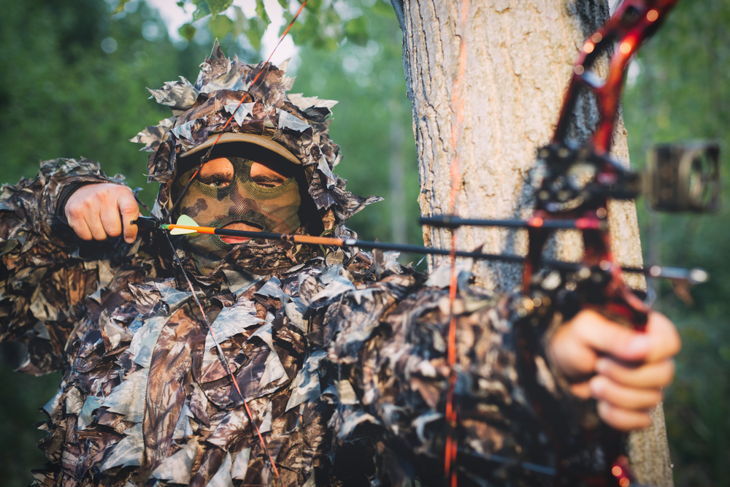For those who love to bow hunt, I’m sure that you’ve been wondering how you can properly use your bow and arrow. While it may seem pretty easy, there are certain positions and terms you need to be acquainted with to improve your skills as a hunter. Even the right type of arrows and bows are vital for you to stay safe and comfortable while hunting! From learning how to purchase the right bow stabilizer you need down to the different positions to practice, bowhunting will take time and passion. But first, you’ll need to consider how to measure draw length when choosing your equipment.
So read on as I talk about measuring your draw length and purchasing the perfect bowhunting equipment customized according to your specifications.
The Importance of Measuring Your Draw Length
You’re probably familiar with the position on where you draw the arrow before taking your shot, aiming for the kill and letting it go. The length between the farthest part of your arm down to your arrow is called the draw length, though there is much more to that than simply guessing or estimating how long your draw length is.
Even though you’re familiar with what the draw length is, it’s still imperative to know about measuring the exact numbers. Let’s think of it as using a pair of shoes. When running, you wouldn’t want to be wearing something too tight or too loose, because it will end up negatively affecting your performance in the long term. Plus, it won’t feel right while using it, making you uncomfortable and not able to improve your skills.

When you have the right draw length, you can use your draw weight properly. This, in turn, will affect the speed of the bow. With the wrong draw length, it may end up with you losing speed.
When using the right bow according to your measurements, it will help you improve as a hunter while keeping you safe. While you can opt to have your draw length professionally measured in any archery shop, it’s still important to know how to do it yourself to save time and money.
Read more: The Best Place to Shoot a Deer: 5 Effective Areas For Clean Kills
How to Measure Draw Length
There are many different ways on how to measure draw length. I’ll be showing you the top two accurate methods that you can easily do at home.
Method 1: Calculated Draw Length
This is a quick and easy process to follow and is recommended for those who use compound or recurve bows. All you need to do here is to measure your arm span and use a simple formula to get your draw length.

What You Need:
- An assistant
- Tape measure
- Colored tape or market (optional)
How to Proceed:
Step 1
Stand at a position where it looks like you’re making the letter T, with your hands spread wide. Make sure to stand up straight with your arms reached out and the palms open, facing forward. I recommend you do this on the wall for a straight and improved position.
Your shoulders should NOT be scrunched, nor should the chest be too extended. Stand naturally and relaxed, as any stiff or tense positioning affects the measurements.
Step 2
While you are at that position, have your assistant measure the tip of your middle finger up to the tip of your other middle finger.
You can also opt to have them mark the area (the tip of your middle fingers) with tape or a marker. Measure the distance between the marks you made on the wall, and you have the arm span.
Step 3
Once you have your arm span, just divide it by 2.5, and you have your calculated draw length. And that’s your calculated draw length!
Method 2: Actual Draw Length
This method is according to the ATA, or the Archery Trade Association. According to the association, the draw length is the distance of the hunter’s full draw, from the nocking point down to the pivot point, plus 1 3/4 inches. The reason why it’s 1 3/4 inches is that many bows today have a distance of 1 3/4 inches from the bow’s pivot point to the back of it.

What You Need:
- Bow
- An assistant
- Tape Measure
How to Proceed:
Step 1
Start properly drawing your arrow as if you were going to aim and shoot at a target (do NOT use an arrow while doing this to avoid injuring yourself or the assistant). Position yourself at FULL draw and make sure that your stance is accurate and according to how you usually hunt.
Do not dry fire your arrow either and keep at a safe position. Stand up straight and do not scrunch your shoulders, with proper alignment between your elbows and arms.
Step 2
Once you are at the proper anchor position, have your assistant measure your draw length, starting from the nock groove down to the pivot point found on the bow grip.
Take note that the nock groove is found on the arrow, the part that would snap on to your bowstring.
Step 3
Once you have the measurement, add 1 3/4 inches to the distance, and that’s your correct draw length.
Here’s a video showing you more details on how to measure draw length:
Tips on Measuring Your Draw Length and Choosing the Right Equipment
A bit stumped on how to correctly measure your draw length or choose the right bow and arrow? Then here are some more tips you can follow to make the process quick:
- I recommend you to have a friend or assistant to do the measurements for you, so you won’t get any wrong numbers if you did it yourself.
- When testing out the bow, you plan on using, be sure that it has the right draw weight, proportioned to its length. It’s also best to get the right draw weight according to your gender and build. Comfort is key here as well, ensuring that you choose a draw weight that uses up to 75% of your maximum strength to energy.
- When choosing an arrow, ensure that the one you choose is the right size, with it being stiff enough to flex and shoot at great speed and intensity from great distances before it breaks. I recommend you to get a carbon arrow for its accuracy and strength.
- If you have tried various methods to measure your draw length and they come in different (yet close) results, then get the average to avoid confusion.
In Conclusion
No matter what type of bow and arrow you use while bowhunting, you’re going to need to determine the critical factors to choose the right equipment suitable according to your size and measurements. Not only will this keep you comfortable, but it will vastly improve your target and aim in the long run!
I hope that this article teaches you how to measure draw length correctly and invest in the best according to your standards and requirements. So what are you waiting for? Follow these steps on how to measure draw length and enjoy a beautiful day of bowhunting today.
If you have any questions or would like to share your experiences with measuring draw lengths or purchasing other bowhunting equipment like carbon arrows, bow release, bow stabilizer, broadhead, compound bows or safety harness, then comment down below. I would love to hear what you have to think.

